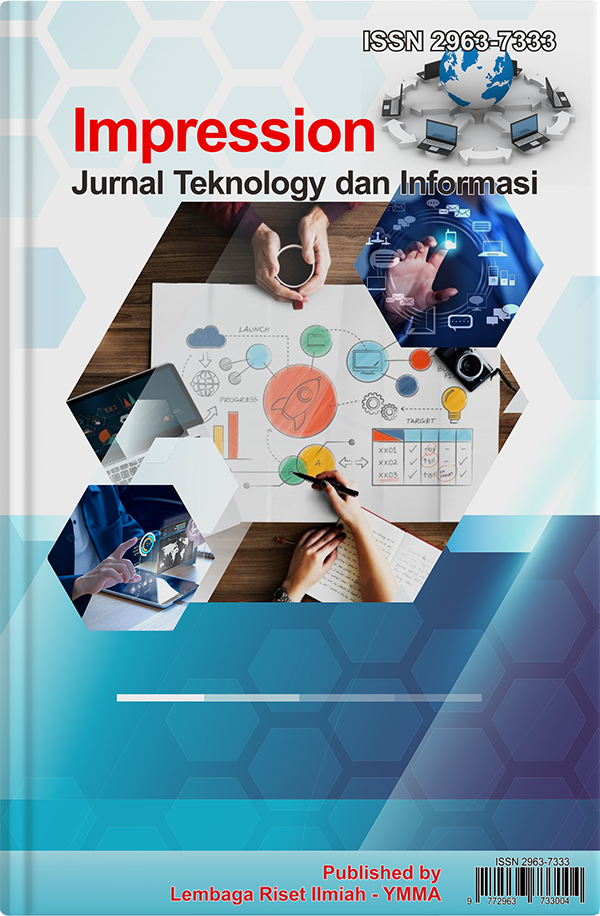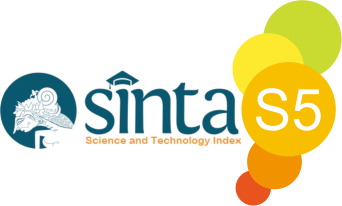Pengaruh Penambahan Konsentrasi Oksigen dalam Laminar Premixed Flame dengan Bahan Bakar Metana
DOI:
https://doi.org/10.59086/jti.v4i2.975Keywords:
Premixed flame, Oksigen, Adiabatic flame temperature, Entropy generation, Laminar flame speedAbstract
This study aims to determine the effect of increasing the percentage of oxygen on laminar premixed flames with methane fuel, using one of the 1D lunar devices, namely CHEMKIN Pro, we analyzed the laminar flame speed, adiabatic flame temperature, and entropy generation rate. In this study, the GRI 3.0 mechanism was chosen because this mechanism is often used to model combustion with hydrocarbon fuels. Based on the simulation results using CHEMKIN Pro software, increasing oxygen concentration increases Adiabatic flame temperature, laminar flame speed, and entropy generation. Based on the simulation results, an oxygen concentration of 33% produces the highest values for adiabatic flame temperature, laminar flame speed, and entropy generation. However, in practice, an oxygen concentration in the range of 26% can be considered a relatively safe and efficient compromise point, because it results in increased thermal performance without too high a surge in entropy generation. This concentration is suitable for application in gas burner systems.
References
Bergthorson, J. M., Goroshin, S., Soo, M. J., Julien, P., Palecka, J., Frost, D. L., & Jarvis, D. J. (2015). Direct combustion of recyclable metal fuels for zero-carbon heat and power. Applied Energy, 160, 368-382. https://doi.org/https://doi.org/10.1016/j.apenergy.2015.09.037
Chen, C.-H., & Li, Y.-H. (2021). Role of N2O and equivalence ratio on NOx formation of methane/nitrous oxide premixed flames. Combustion and Flame, 223, 42-54. https://doi.org/https://doi.org/10.1016/j.combustflame.2020.10.002
Chen, R., Thijs, L. C., Hansen, B. B., Lin, W., Wu, H., Glarborg, P., . . . Mi, X. (2025). Combustion of micron-sized iron particles in a drop tube reactor. Fuel, 383, 133814. https://doi.org/https://doi.org/10.1016/j.fuel.2024.133814
DESIGNS, M. E. (2011). Chemkin-pro. Ansys.
Ge, Y., Ma, H.-H., & Wang, L.-Q. (2024). Experimental and numerical investigation of combustion characteristics of carbon-free NH3/H2 blends in N2O. International Journal of Hydrogen Energy, 49, 510-520. https://doi.org/https://doi.org/10.1016/j.ijhydene.2023.08.187
Glassman, I., Yetter, R. A., & Glumac, N. G. (2014). Combustion. Academic press.
Kee, R. J., Rupley, F. M., & Miller, J. A. (1989). Chemkin-II: A Fortran chemical kinetics package for the analysis of gas-phase chemical kinetics.
Li, G., Zhu, Z., Zheng, Y., Guo, W., Tang, Y., & Ye, C. (2023). Experiments on a powerful, ultra-clean, and low-noise-level swirl-combustion-powered micro thermoelectric generator. Energy, 263, 125825. https://doi.org/https://doi.org/10.1016/j.energy.2022.125825
Li, Y.-H., Pangestu, S., Purwanto, A., & Chen, C.-T. (2021). Synergetic combustion behavior of aluminum and coal addition in hybrid iron-methane-air premixed flames. Combustion and Flame, 228, 364-374. https://doi.org/https://doi.org/10.1016/j.combustflame.2021.02.013
Li, Y.-H., Purwanto, A., & Chuang, B.-C. (2022). Micro-Explosion mechanism of iron hybrid Methane-Air premixed flames. Fuel, 325, 124841. https://doi.org/https://doi.org/10.1016/j.fuel.2022.124841
Lu, M., Long, W., Wei, F., Dong, D., Cong, L., Dong, P., . . . Wang, P. (2024). Assessment of carbon-free fuel ammonia combustion with low methanol blends in reducing GHG emissions including N2O. Journal of Cleaner Production, 463, 142755. https://doi.org/https://doi.org/10.1016/j.jclepro.2024.142755
Nawaz, B., Nasim, M. N., Das, S. K., Landis, J., SubLaban, A., Trelles, J. P., . . . Mack, J. H. (2024). Combustion characteristics and emissions of nitrogen oxides (NO, NO2, N2O) from spherically expanding laminar flames of ammonia–hydrogen blends. International Journal of Hydrogen Energy, 65, 164-176.
Prasidha, W., Baigmohammadi, M., Shoshin, Y., & de Goey, P. (2024). Towards an efficient metal energy carrier for zero–emission heating and power: Iron powder combustion. Combustion and Flame, 268, 113655.
Razus, D., Mitu, M., Giurcan, V., Movileanu, C., & Oancea, D. (2018). Methane-unconventional oxidant flames. Laminar burning velocities of nitrogen-diluted methane–N2O mixtures. Process Safety and Environmental Protection, 114, 240-250. https://doi.org/https://doi.org/10.1016/j.psep.2017.12.026
Smith, G. P., Golden, D. M., Frenklach, M., Moriarty, N. W., Eiteneer, B., Goldenberg, M., . . . Gardiner Jr, W. C. (2000). GRImech 3.0 reaction mechanism. Sandia National Laboratory, 20(0), 0.
Turns, S. R. (1996). Introduction to combustion (Vol. 287). McGraw-Hill Companies New York, NY, USA.
Zhang, K., Hu, G., Liao, S., Zuo, Z., Li, H., Cheng, Q., & Xiang, C. (2016). Numerical study on the effects of oxygen enrichment on methane/air flames. Fuel, 176, 93-101.
Bergthorson, J. M., Goroshin, S., Soo, M. J., Julien, P., Palecka, J., Frost, D. L., & Jarvis, D. J. (2015). Direct combustion of recyclable metal fuels for zero-carbon heat and power. Applied Energy, 160, 368-382. https://doi.org/https://doi.org/10.1016/j.apenergy.2015.09.037
Chen, C.-H., & Li, Y.-H. (2021). Role of N2O and equivalence ratio on NOx formation of methane/nitrous oxide premixed flames. Combustion and Flame, 223, 42-54. https://doi.org/https://doi.org/10.1016/j.combustflame.2020.10.002
Chen, R., Thijs, L. C., Hansen, B. B., Lin, W., Wu, H., Glarborg, P., . . . Mi, X. (2025). Combustion of micron-sized iron particles in a drop tube reactor. Fuel, 383, 133814. https://doi.org/https://doi.org/10.1016/j.fuel.2024.133814
DESIGNS, M. E. (2011). Chemkin-pro. Ansys.
Ge, Y., Ma, H.-H., & Wang, L.-Q. (2024). Experimental and numerical investigation of combustion characteristics of carbon-free NH3/H2 blends in N2O. International Journal of Hydrogen Energy, 49, 510-520. https://doi.org/https://doi.org/10.1016/j.ijhydene.2023.08.187
Glassman, I., Yetter, R. A., & Glumac, N. G. (2014). Combustion. Academic press.
Kee, R. J., Rupley, F. M., & Miller, J. A. (1989). Chemkin-II: A Fortran chemical kinetics package for the analysis of gas-phase chemical kinetics.
Li, G., Zhu, Z., Zheng, Y., Guo, W., Tang, Y., & Ye, C. (2023). Experiments on a powerful, ultra-clean, and low-noise-level swirl-combustion-powered micro thermoelectric generator. Energy, 263, 125825. https://doi.org/https://doi.org/10.1016/j.energy.2022.125825
Li, Y.-H., Pangestu, S., Purwanto, A., & Chen, C.-T. (2021). Synergetic combustion behavior of aluminum and coal addition in hybrid iron-methane-air premixed flames. Combustion and Flame, 228, 364-374. https://doi.org/https://doi.org/10.1016/j.combustflame.2021.02.013
Li, Y.-H., Purwanto, A., & Chuang, B.-C. (2022). Micro-Explosion mechanism of iron hybrid Methane-Air premixed flames. Fuel, 325, 124841. https://doi.org/https://doi.org/10.1016/j.fuel.2022.124841
Lu, M., Long, W., Wei, F., Dong, D., Cong, L., Dong, P., . . . Wang, P. (2024). Assessment of carbon-free fuel ammonia combustion with low methanol blends in reducing GHG emissions including N2O. Journal of Cleaner Production, 463, 142755. https://doi.org/https://doi.org/10.1016/j.jclepro.2024.142755
Nawaz, B., Nasim, M. N., Das, S. K., Landis, J., SubLaban, A., Trelles, J. P., . . . Mack, J. H. (2024). Combustion characteristics and emissions of nitrogen oxides (NO, NO2, N2O) from spherically expanding laminar flames of ammonia–hydrogen blends. International Journal of Hydrogen Energy, 65, 164-176.
Prasidha, W., Baigmohammadi, M., Shoshin, Y., & de Goey, P. (2024). Towards an efficient metal energy carrier for zero–emission heating and power: Iron powder combustion. Combustion and Flame, 268, 113655.
Razus, D., Mitu, M., Giurcan, V., Movileanu, C., & Oancea, D. (2018). Methane-unconventional oxidant flames. Laminar burning velocities of nitrogen-diluted methane–N2O mixtures. Process Safety and Environmental Protection, 114, 240-250. https://doi.org/https://doi.org/10.1016/j.psep.2017.12.026
Smith, G. P., Golden, D. M., Frenklach, M., Moriarty, N. W., Eiteneer, B., Goldenberg, M., . . . Gardiner Jr, W. C. (2000). GRImech 3.0 reaction mechanism. Sandia National Laboratory, 20(0), 0.
Turns, S. R. (1996). Introduction to combustion (Vol. 287). McGraw-Hill Companies New York, NY, USA.
Zhang, K., Hu, G., Liao, S., Zuo, Z., Li, H., Cheng, Q., & Xiang, C. (2016). Numerical study on the effects of oxygen enrichment on methane/air flames. Fuel, 176, 93-101.
Downloads
Published
How to Cite
Issue
Section
License
Copyright (c) 2025 Aris Purwanto

This work is licensed under a Creative Commons Attribution 4.0 International License.
Impression Jurnal Teknologi dan Informasi
Publisher Lembaga Riset Ilmiah

This work is licensed under a Creative Commons Attribution 4.0 International License.
Most read articles by the same author(s)
- Priyo Heru Adiwibowo, Grummy Walianduw, Ika Nurjannah, Aris Purwanto, Pengaruh Rasio Sudu Terpancung Berpenampang Segitiga Terhadap Kinerja Turbin Crossflow , Impression : Jurnal Teknologi dan Informasi : Vol. 4 No. 2 (2025): July 2025













